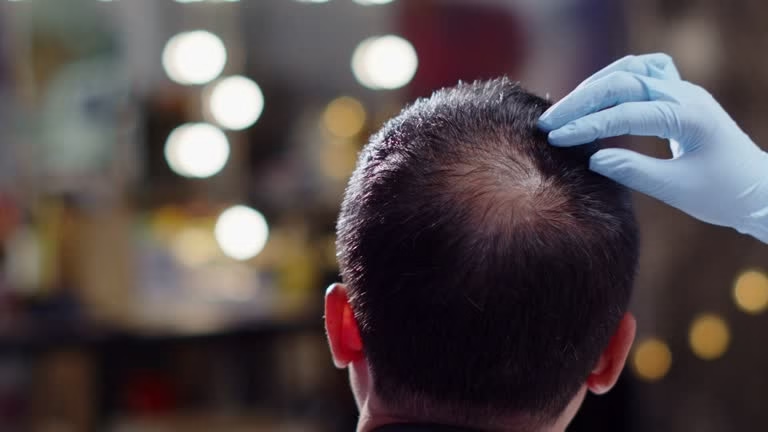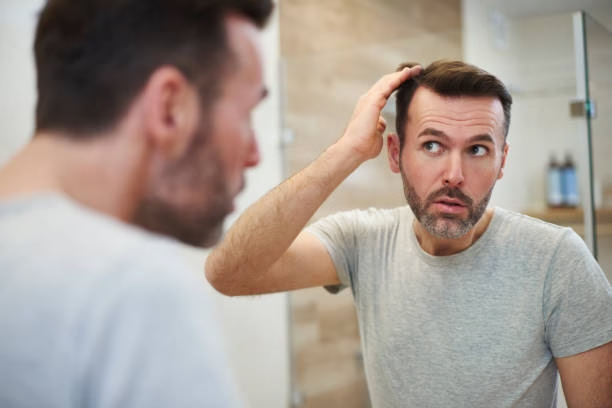
Hair transplantation has been a life-changing surgery for balding individuals. With cutting-edge technologies like Follicular Unit Extraction (FUE) , surgeons are able to restore hair in bald areas permanently in a subtle and imperceptible way. However, some people face an unexpected problem: transplanted hair falling out after 2 years. Although this is not common, it does occur and may be indicative of underlying issues.
Dr. Viral Desai, a well-known cosmetic and plastic surgeon in Mumbai, states,
“Although hair transplants yield high success rates, genetics, stress, and poor maintenance can affect long-term outcomes. Early diagnosis is the key to sustaining results.”
With over 20 years of experience, Dr. Viral Desai is a hair restoration specialist. He is the founder and medical director of CPLSS and offers world-class hair transplant surgery in Mumbai. Dr. Desai has received some of the most prestigious awards for his efforts.
Is Transplanted Hair Falling Out After 2 Years Normal?
“Though the transplanted hair is mostly resistant to balding, such things as continued androgenetic alopecia, stress, or illness may influence both native and transplanted hairs,”
mentions Dr. Viral Desai, an acclaimed celebrity plastic surgeon in Mumbai. One must be able to distinguish between normal shedding and abnormal loss in order to know what to do next.
Common Causes of Hair Loss 2 Years After Hair Transplant

- Progressive Hair Loss: If the underlying cause of hair loss, such as androgenetic alopecia, continues, native hairs may continue to thin, affecting overall hair density.
- Telogen Effluvium: Stressful events or medical conditions can push hairs into the resting phase, leading to temporary shedding.
- Poor Post-Operative Care: Neglecting prescribed medications or failing to follow aftercare instructions can compromise graft survival.
- Scalp Conditions: Issues like dandruff, psoriasis, or infections can impact hair health and lead to shedding.
- Nutritional Deficiencies: Lack of essential nutrients like iron, vitamin D, or protein can weaken hair follicles.
- Hormonal Imbalances: Conditions like thyroid disorders or hormonal fluctuations can contribute to hair loss.
Common Causes of Hair Loss 2 Years After Hair Transplant

- Sudden Increase in Hair Shedding: If your hair suddenly starts falling out in clumps or the volume of shedding increases drastically without a known trigger, it could suggest shock loss, autoimmune response, or post-surgical telogen effluvium.
- Patchy or Uneven Hair Loss: Transplanted hair should grow uniformly. If you notice bald spots or uneven patches, especially in the grafted area, it could point to graft failure, infection, or poor blood circulation in some areas of the scalp.
- Persistent Itching, Redness, or Inflammation: A little itching during healing is normal, but if it lingers beyond the expected recovery period or worsens, this could be a sign of folliculitis, allergic reaction, or scalp infection.
- Pain or Discomfort in the Transplanted Area: No lingering pain from a healed transplant should exist. Chronic burning, tenderness, or pain may be symptoms of deeper-inflammation, cyst formation, or irritation of the nerve that needs clinical intervention.
- Changes in Hair Texture or Quality: Excessive thinning, wiry, brittle, or loss of natural shine in the transplanted hair can be an indication of poor nutrition of the grafts, infection of the scalp, or inadequate hair care.
- Visible Scarring or Crusting: Long-term visible scabbing, scarring, or prominent crusting over grafts may be a sign of inadequate healing or infection that may jeopardize the success of the transplant.
- Lack of Growth Even After 18–24 Months: If the transplanted region exhibits poor or no new hair growth far beyond the normal regrowth period, it could be due to failed grafts or scalp problems bothering the follicles.
How to Prevent Hair Loss Post-Transplant

“Taking early steps can improve the survival of your hair transplant results,”
emphasizes Dr. Viral Desai, an eminent cosmetic surgeon in Mumbai.
- Follow Post-Operative Instructions: Strictly adhere to the surgeon’s instructions for best healing and graft survival.
- Eat a Healthy Diet: Include food that contains vitamins and minerals necessary for hair maintenance.
- Manage Stress: Engage in stress-reducing activities, such as meditation, exercise, or hobbies.
- Regular Scalp Care:Keep the scalp clean and moisturized to prevent infections and promote healthy hair growth.
- Avoid Harsh Hair Treatments: Reduce the use of heat styling tools, avoid chemical treatments, and refrain from wearing tight hairstyles.
- Regular Check-Ups: Make regular checkups with your hair transplant doctor to track progress and make any necessary adjustments.
Conclusion
Experiencing hair loss two years after a transplant can be distressing, but understanding the potential causes and taking proactive steps can make a significant difference. With the guidance of experts such as Dr. Viral Desai, one of the top hair transplant surgeons in Mumbai, you can tackle such setbacks in the best possible manner and sustain the outcome of your hair transplant process.
Frequently Asked Questions
Is transplanted hair loss after two years normal?
There is some normal shedding shortly after the procedure, but significant loss two years post-transplantation is uncommon and should be evaluated.
Will my tummy tuck scar improve after 6 months?
Yes, your tummy tuck scar will improve after six months, gradually fading and flattening. Using silicone sheets, scar creams, and sun protection can enhance healing.
How can I differentiate between normal shedding and problematic hair loss?
If hair loss is sudden, patchy, or accompanied by scalp issues, it’s advisable to consult your surgeon.
Can scalp infections impact transplanted hair?
Yes, infections can damage hair follicles, leading to hair loss.
Are there non-surgical treatments to enhance hair transplant results?
Treatments like PRP therapy can boost hair growth and improve transplant outcomes.
What should I do if I lose hair years following transplant?
Consult your hair transplant surgeon to identify the cause and explore appropriate treatments.
How long do hair transplant results typically last?
With proper care, transplanted hair can last a lifetime, though individual results may vary.
Disclaimer: The content shared on this page is for informational purposes and not for promotional use.


